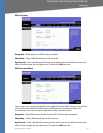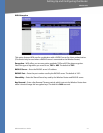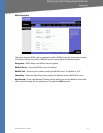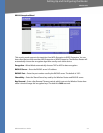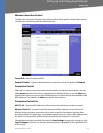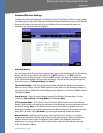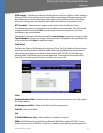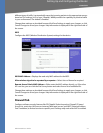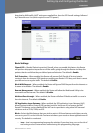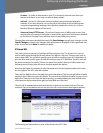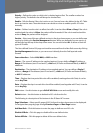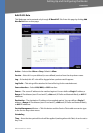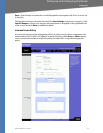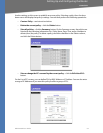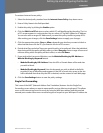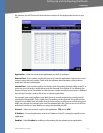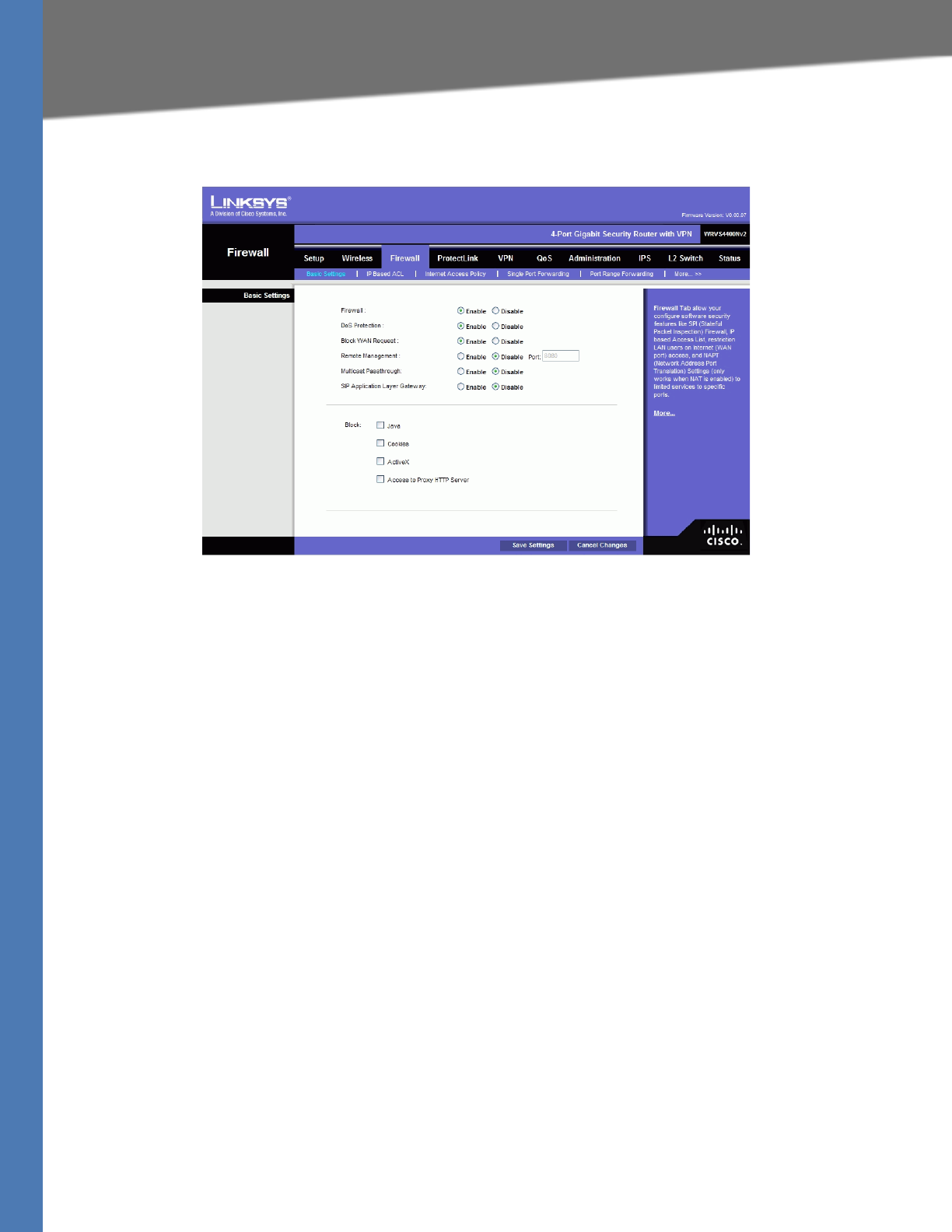
WRVS4400N User Guide 58
Firewall Tab
Setting Up and Configuring the Router
Note that for WAN traffic, NAPT settings are applied first, then the SPI Firewall settings, followed
by IP based Access List (which requires more CPU power).
Basic Settings
Firewall: SP—(Stateful Packet Inspection) Firewall, when you enable this feature, the Router
will perform deep packet inspection on all the traffic going through the Router and drop the
packets that do not follow the pre-defined protocol behavior. The default is Enable.
DoS Protection—When enabled, the Router will prevent DoS (Denial of Service) attacks
coming in from the Internet. DOS attacks are making your Router’s CPU busy such that it cannot
provide services to regular traffic. The default Is Enable.
Block WAN Request—When enabled, the Router will ignore PING Request from the Internet so
it seems to be hidden. The default is Enable.
Remote Management—When enabled, the Router will allow the Web-based Utility to be
accessed from the Internet. The default is Disable.
Multicast Pass-through—When enabled, the Router will allow IP Multicast traffic to come in
from the Internet. The default is Disable.
SIP Application Layer Gateway—When enabled, the SIP Application Layer Gateway (ALG)
allows Session Initiation Protocol (SIP) packets (used for Voice over IP) to traverse the NAT
firewall. This feature can be disabled if the VoIP service provider is using other NAT traversal
solutions such as STUN, TURN, and ICE.
Block—Select the Web features that you wish to restrict. All those features could place security
concern to your PCs on the LAN side. You have to balance your needs on those applications and
security. The default is unselected.
•Java—Java is a programming language for websites. If you deny Java, you run the risk of
not having access to Internet sites created using this programming language.



